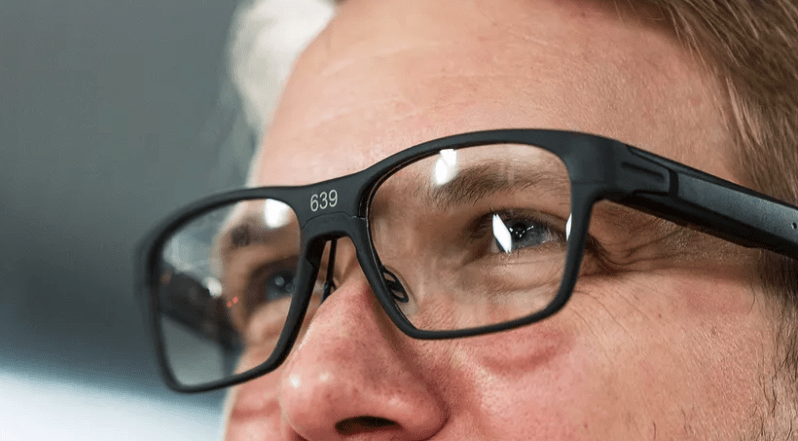Glasses weren’t always considered a go-to fashion accessory. Big fashion names like Prada and Chanel transformed eyewear into a sought-after category. It wasn’t long until smart tech started experimenting on glasses, where market appeal is based on convenience.
Intel, the world’s second largest and highest valued technology corporation, seized the opportunity to introduce smart specs in a way that sticks close to normal glasses. Vaunt is their latest smart specs project in their new devices group, set to be worn by test developers later this year.
Through the Lens
Vaunt operates via Bluetooth, designed to show basic smart gadget notifications through holographic reflectors on the right lens. It uses the Vertical-Cavity Surface-Emitting Laser technology, which shines red monochrome images at or below 150 pixels on the lens, which is sent to the retina through the back of the eyeball. This means you won’t have to focus on the display – a plus for the easily distracted.
If you’re not directly looking at it, the image disappears completely.
This non-intrusive design is meant for wearers to no longer worry about social situations. It doesn’t require tapping or other necessary hand movements. It’s low power and works well with both prescription and non-prescription glasses. There’s no touchpad, microphone, camera, or any other high-power feature.
Vaunt is designed to service simple applications – other than notifications, contextual information from navigation or step-by-step guides are included. The specs are compact and lightweight at around 50 grams. Design variations are in the works, lowering the geekiness factor associated with smart specs design.


Simple and Non-Intrusive Smart Glasses
Look and feel aren’t the only things that put Vaunt at an advantageous selling point. Tech that’s designed to deliver notifications beyond a phone gives you more time off-screen. They come in handy when you need to access info faster.
The laser tech that powers the holographic displays are said to be safer for the eyes. The notifications seen are easily dismissible with a quick nod and readily accessible by just looking at them from your peripheral vision. Your experience or interaction with the specs largely depends on the applications being used.
As for issues normally concerning “always-on” tech like AR headsets, Vaunt is not a futuristic device that could demand dependency. The absence of a camera and its overall non-intrusive design addresses those with privacy concerns.
Potential for Mainstream Adoption
Selling to a considerable reach of people within the market can fund production, experiment, research, and innovation. This is why smart tech aims for mainstream adoption, requiring the design process to be precise, accurate to the market, and carefully thought through.
On the other hand, a bulk of consumer interest within the AR/smart tech industry is made up of gamers. Gaming demands much more visually intensive features, but AR games like Pokémon Go and Temple Treasure Hunt could work on the glasses. Developers might have to compromise and sacrifice graphics and smoothness since the specs are low-powered.
In the realistic market, Vaunt has a maximum of two years for inflection before it can finally be launched to consumers. In the AR market, there hasn’t been any chance for a million shipments to occur. Given the possibility of strong brands pushing smart specs into the market, the idea of a million shipments seems more plausible, according to ABI Research Senior Analyst Eric Abbruzzese.
Picking Up After Google
Compared to Google Glasses, Vaunt has a promising start in terms of safety, privacy, and social context. There’s enough reason to be excited for Intel’s plans with the specs – its advantages can create more room for improvements or solutions for issues or problems with AR tech.
Intel has not set a specific release date for Vaunt, though it has been reported to be unveiled likely in 2020. That date could be pushed, as the company is said to be planning a majority stake negotiation with a sales channels company – according to sources in a Bloomberg report.
In terms of pricing, there are no details yet. . The price range highly depends on the VCSEL costs, since hardware is minimal. Google Glasses cost $1500 but there has been speculation that Intel’s specs may rely on cloud-based streaming content, keeping hardware maintenance and costs low


